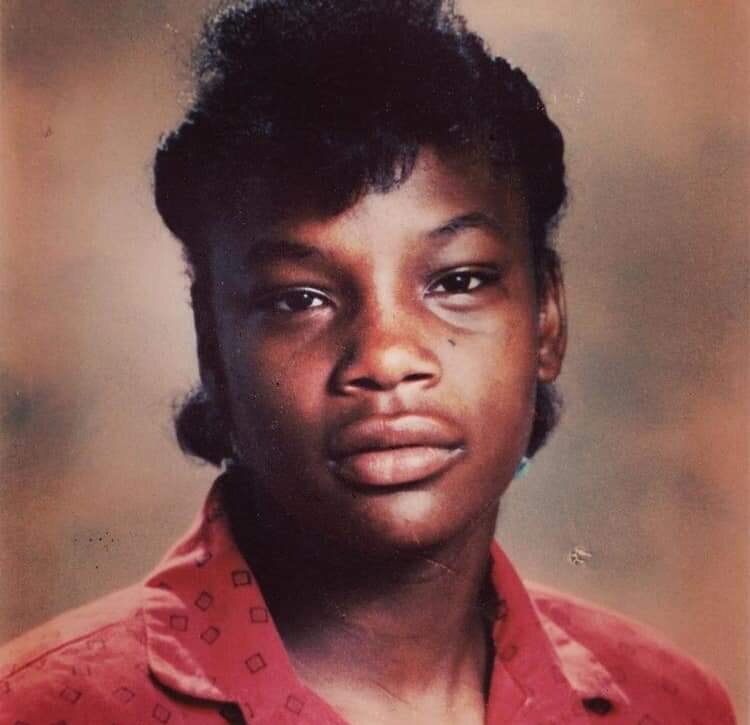
THE INJUSTICE SURROUNDING THE SHOOTING DEATH OF 15-YEAR-OLD LATASHA HARLINS AT A SOUTH CENTRAL LOS ANGELES STORE BECAME A FLASHPOINT FOR THE CITY’S 1992 CIVIL UPRISING. AS THE BLACK COMMUNITY EXPRESSED ITS PROFOUND PAIN IN THE STREETS, LATASHA’S FRIENDS AND FAMILY PRIVATELY MOURNED THE LOSS OF A VIBRANT CHILD WHOSE FULL STORY WAS NEVER IN THE HEADLINES. NEARLY THREE DECADES LATER, DIRECTOR SOPHIA NAHLI ALLISON’S A LOVE SONG FOR LATASHA REMOVES LATASHA FROM THE CONTEXT OF HER DEATH AND REBUILDS AN ARCHIVE OF A PROMISING LIFE LOST. ORAL HISTORY AND MEMORIES FROM LATASHA’S BEST FRIEND AND COUSIN CONVERGE IN A DREAMLIKE PORTRAIT THAT SHOWS THE IMPACT ONE BRIEF BUT BRILLIANT LIFE CAN HAVE.
Latasha Lavon Harlins
Latasha Lavon Harlins
DIRECTOR’S STATEMENT
When I was 4 years old, I recall the fires from the 1992 L.A. riots being so monstrous that the roof of a house on my block appeared to be ablaze. A dark thick smoke began filling the air in the distance. Weaving bits and pieces of 1992 back into my subconscious, this is my most vivid memory.
Trust the unseen. Memories that contort around the body, however uncomfortable they may be, breathe into them. This is how we heal, remember, reimagine, release.
I rely on the spirit of memory, the vibration of a collective consciousness, the secret languages Black women have transferred to one another throughout centuries and generations. These stories birth our archive, a living breathing continuum of the spirit.
A LOVE SONG FOR LATASHA carefully conjures memories shared by Latasha’s best friend Ty and cousin Shinese to document a more nuanced narrative of Latasha Harlins beyond her trauma. Through the reclaiming and re-envisioning of these archives, we are challenging a system that has historically prevented Black women and girls from having agency over their narrative and public image. By activating this space, we are interrogating new ways to reimagine and engage with Black history that have been erased and left void. These memories serve as evidence of our existence and the resistance of Black women and girls.
When I think of Latasha’s story, I cannot ignore the unjust adultification of Black girls, the corrupt systems that have unfairly punished, violated, and erased our stories. Although her death was a catalyst for the L.A. riots, this film is about life. She is remembered beyond the trauma of a Black body, beyond a statistic, a newspaper headline, or an inaccurate Wikipedia page [multiple outlets since her death have incorrectly reported her date of birth as July 14, 1975]. Latasha was 15 years old, a freshman at Westchester High School, and her birthday was January 1, 1976.
Deeply inspired by the methodology and conjured stories of Black women writers such as Saidiya Hartman, Sonya Sanchez, Zora Neale Hurston, and Alice Walker, A LOVE SONG FOR LATASHA explores the spiritual process of constructing a story when no tangible elements exists beyond the memories, a pulsating and vibrant energy that cannot be seen but felt. The film challenges the restrictions and constraints of conventional documentaries by visually articulating both the public and private spaces that Black women and girls must navigate and coexist in. As a native of South Central Los Angeles, I created A LOVE SONG FOR LATASHA as a spiritual archive for the community. The film is for every Black girl who has ever been erased, silenced, or discredited. We will always see you and fight for you. This is for Ty, Shinese, and Tasha.
—Director Sophia Nahli Allison

